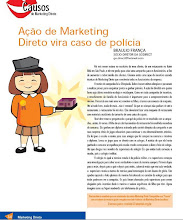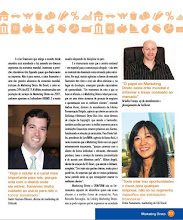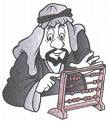
Web 2.0 has come to medicine, revealing some intriguing analogies between medicine and the Internet -- and life in general.
In medicine it has been fashionable to describe the approach to diagnosis and treatment in the form of decision tree algorithms, many of which can be found online, with numerous branch points -- "if this then that," and then the next decision point "if this then that," etc. The problem with such a system is that if you make one mistake, then you go down an erroneous path and often end up at a wrong answer dead-end.
Probably many people live life like that, stuck in wrong answer dead-ends and feeling rather desperate when they finally realize the answer is wrong.
However, if you can see that there are shortcuts between most of the points on the algorithm, that most of the arrows go both ways, and that the algorithm reflects only the dimensions you can see and there are lots of others you can't, the whole thing is a lot more complex than you thought -- but that complexity multiplies manyfold the likelihood of a successful resolution. When you realize all that, then you see it is all good and most problems have a solution or two or three!
Getting back to medicine, one way to keep things "real" and have solutions emerge is to engage and discover from a community served what the real needs are and how one can best meet them.
The medically oriented communities I'm talking about can be online, social-networking communities. There are such medical online communities generating worldwide consensus -- communities in developing countries, communities with many different levels of engagement and different manifestations of global citizenship.
Medicine and Web 2.0 are a good fit, as you can see in videos associated with particular sites. Examples of what I'm talking about: The doctor's bag depicted in the Jordon Shlain On Call Medical Group presentation is a marvelous combination of new and old tech. The sense of community in Jay Parkinson's presentation is outstanding.
On these and other Web 2.0 medical sites, you will be struck by three things: 1) The ideas are appealing -- they really seem logical and workable for today's society; 2) the approaches could not possibly be rendered in an algorithm -- they are just too varied and heterogeneous for that; 3) the communication approaches described really resonate as the community engagement of today.
One reason Web 2.0 and medicine go well together is that technology is key to engaging communities in an effective way, keeping medical approaches relevant to real needs. We think of technology as enhancing diagnosis and treatment, the science part of medicine, but it also equally well can enhance the art of medicine, the humanistic, people side, and the doctor-patient relationship.
Another reason Web 2.0 is a fit for medicine is that there is global connectedness via the Internet.
Indeed, many of the same approaches that work in medicine, including Web 2.0 applications, will work equally well for other aspects of human endeavor in our increasingly connected society.
— Kim Solez, MD, Director of NKF cyberNephrology at the University of Alberta. Fonte Internet Evolution.
Tradução google tradutor
Escrito por Kim Solez, MD
10/31/2008 2 comentários
Não ratings
Taxa de Login
Digg reddit DEL.ICIO.US discutir este e-mail
Web 2.0 chegou à medicina, revelando algumas intrigantes analogias entre medicina e da internet - ea vida em geral.
Na medicina tem sido moda para descrever a abordagem ao diagnóstico e tratamento, em forma de árvore algoritmos decisão, muitos dos quais podem ser encontrados on-line, com inúmeros pontos ramo - "se isso, então isso", e, em seguida, o próximo ponto decisão " se então que este ", etc O problema com um sistema deste tipo é que se você fizer um erro, então você vai para baixo uma via errada e muitas vezes acabam em uma resposta errada beco sem saída.
Provavelmente muitas pessoas viver a vida como aquela, preso na resposta errada sem saída e me sentindo um pouco desesperado, quando finalmente percebem a resposta está errada.
No entanto, se você pode ver que há atalhos entre a maioria dos pontos sobre o algoritmo, que a maioria das setas vai para os dois lados, e que o algoritmo reflete apenas as dimensões e você pode ver, existem muitas outras pessoas que você não pode, a coisa toda é muito mais complexa do que se pensava -, mas que a complexidade manyfold multiplica a probabilidade de uma resolução bem sucedida. Quando você percebe que tudo, então você vê que é bom e todos os problemas têm uma solução mais ou dois ou três!
Voltando para a medicina, uma forma de manter as coisas "reais" e têm soluções emerge é a de envolver e descobrir o que serviu de uma comunidade são as verdadeiras necessidades e como é possível conhecê-los melhor.
O medicamente orientadas para comunidades que estou falando pode ser on-line, redes sociais, comunidades. Existirem tais médicos comunidades online geram consenso mundial - comunidades nos países em desenvolvimento, com muitas comunidades diferentes níveis de envolvimento e as diferentes manifestações de uma cidadania mundial.
Medicina e Web 2.0 são um bom ajuste, como você pode ver vídeos em associado a sites específicos. Exemplos do que estou falando: O médico do saco retratado no Jordon Shlain On Call Medical Group é uma apresentação maravilhosa combinação de tecnologia novas e antigas. O sentimento de comunidade em Jay Parkinson apresentação está pendente.
Por estas e outras instalações médicas da Web 2.0, você será surpreendido por três coisas: 1) As idéias são apelativos - eles realmente parece lógico e viável para a sociedade actual; 2) as abordagens não poderia ser prestado em um algoritmo - eles são muito variadas e heterogêneas só por isso; 3) a comunicação abordagens descritas realmente soar como o engajamento da comunidade hoje.
Um dos motivos da Web 2.0 ea medicina vai bem em conjunto é que a tecnologia é a chave para comunidades envolvidas de uma forma eficaz, mantendo-se abordagens médicas pertinentes às necessidades reais. Achamos que a tecnologia como reforço do diagnóstico e tratamento, a ciência parte da medicina, mas ele também pode melhorar igualmente bem a arte da medicina, os humanistas, as pessoas lado, e da relação médico-paciente.
Outra razão da Web 2.0 é um medicamento está apto para que haja conexidade global através da Internet.
Na verdade, muitas das mesmas abordagens que trabalham na área da medicina, incluindo aplicações Web 2.0, trabalhará igualmente bem para os outros aspectos do esforço humano na nossa sociedade cada vez mais conectado.
- Solez Kim, MD, diretor do NKF cyberNephrology da Universidade de Alberta












Nenhum comentário:
Postar um comentário